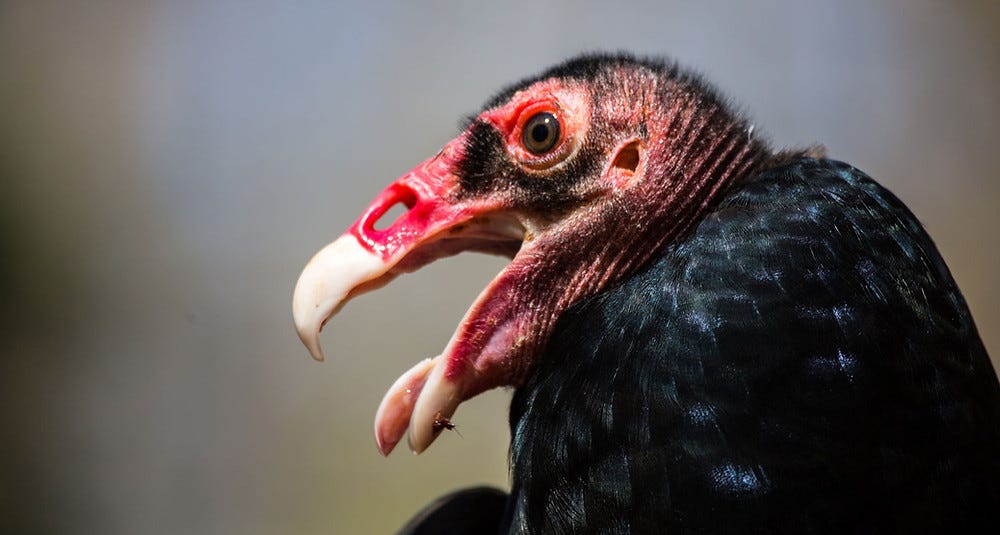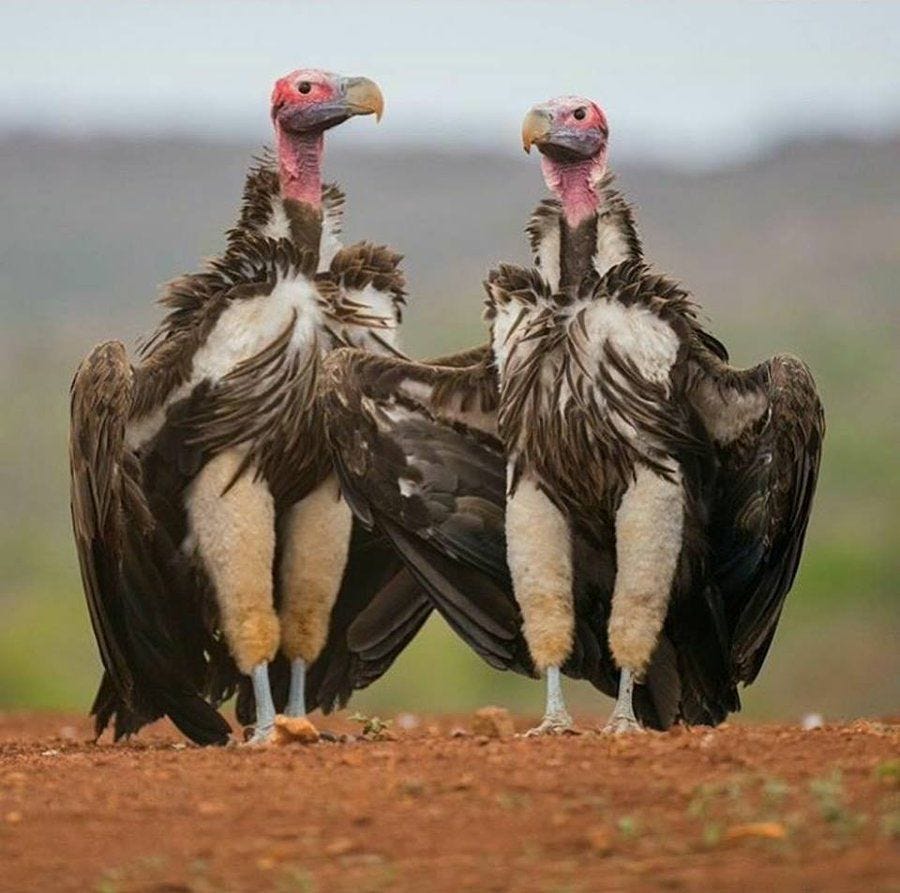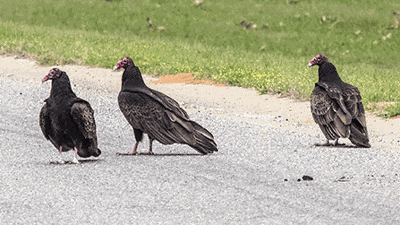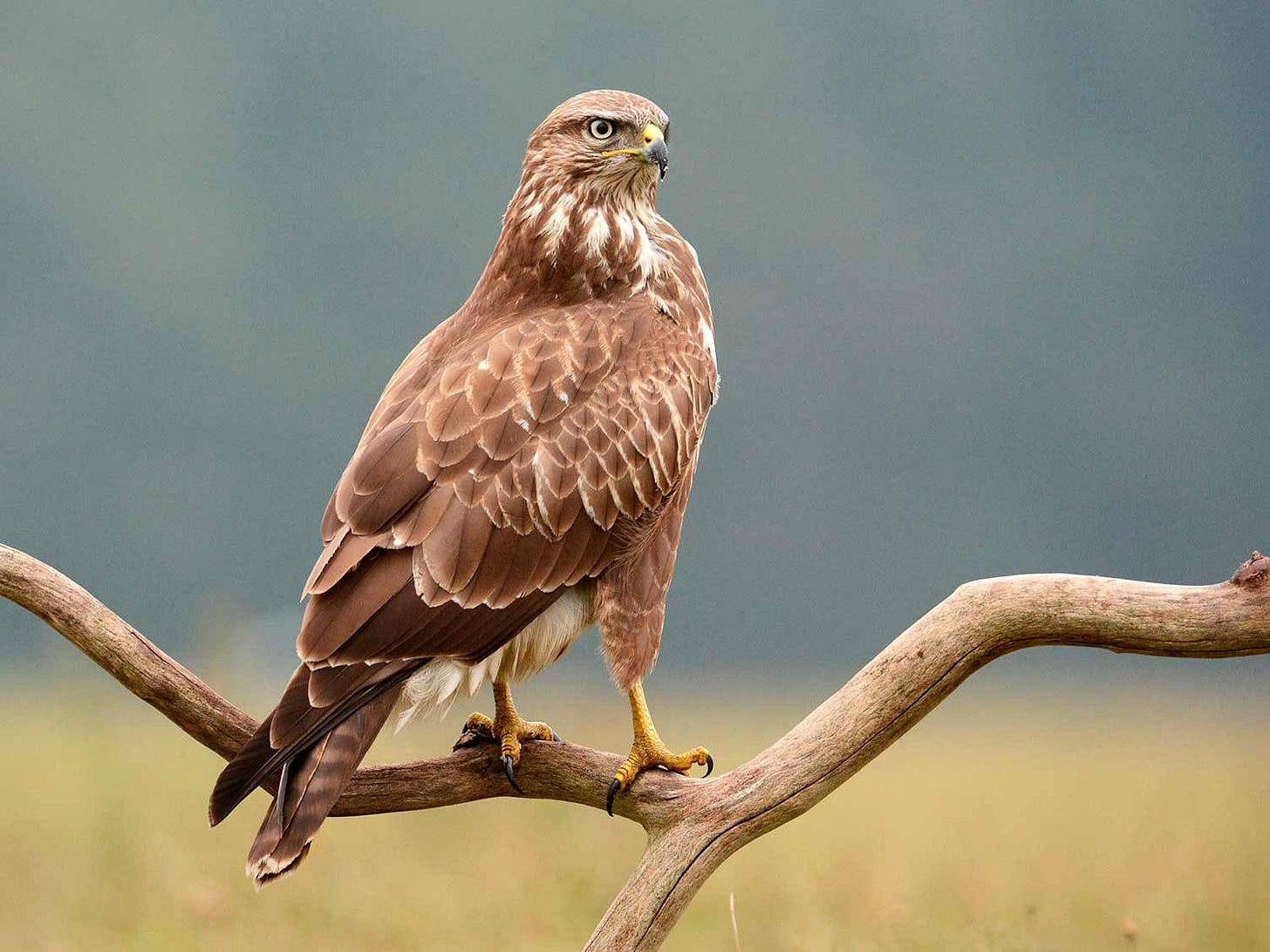Welcome to Natural Wonders, a place where I wonder about my wanderings and pick up curious facts about the birds and the bees. If you were forwarded this email or stumbled here by accident, feel free to subscribe below:
As a road cyclist, I come across a lot of roadkill when I’m out and about. It’s a sad byproduct of the encroachment of humans into animal territory, the carcasses of random skunks/opossums/deer that have tried and failed to cross the Highway of Death.
Fortunately, buzzards are there to clean up the mess. Over a matter of hours or days, a “committee” of vultures can take a full-grown deer carcass down to a pile of bones (actually, when a group of vultures gathers around a dead carcass they’re called, appropriately, a “wake”).
Last week I saw a wake of buzzards meeting in the road around some dead animal or other, and I wondered – how did they know it was there? Do they have extremely good eyesight? Or does it have to do with the putrid smell? Most of the time I see vultures flying hundreds of feet up in the sky – surely they can’t smell it from there, can they?
How do buzzards know when something has died?
Before we even get started, I should probably clarify some terminology. Here in America (actually, in North, South and Central Americas) when we say “buzzard” we are referring to New World vultures. These are scavengers that feed only on already-dead animals. Their pink or black heads are featherless, the better to clean after shoving their heads into rotting corpses. They have wingspans of 6 feet, about the height of your average doorway. Our New World buzzards have weak little “chicken” feet when compared to birds of prey because they will never carry off their meal like eagles and hawks do.

Incidentally, you can always tell a buzzard from a hawk up in the sky. Birds of prey form a straight silhouette with their wings because of the powerful muscles they need for carrying off their prey. Buzzards, on the other hand, form a shallow V-shape because they spend much of their time gliding and have no need for muscular wings.
Also, birds of prey are usually light-colored on their undersides so that they might blend into the sky to any potential prey that glances upwards. Buzzards have no need for such trickery.
At any rate, THAT’s what we mean by buzzards over here in the New World. However, I know we have subscribers in the Natural Wonders community who live in the so-called Old World (Europe, Asia, and Africa), and for you the word buzzard actually refers to a bird of prey more like an American hawk than the scavenger we’re familiar with:
This distinction is important to this week’s Natural Wonders question, because New World and Old World vultures find their next meals very differently. As you might expect from the noble pose of the specimen above, Old World buzzards hunt for live prey using their acute sense of sight. They pounce on their prey from above, ripping it to shreds with their sharp beaks and talons.
Old World buzzards, however, use their sense of smell to find their food. This is amazing because most birds don’t actually have a sense of smell – the olfactory parts of their brains aren’t at all developed. But New World buzzards can smell rotting meat over a mile, possibly up to five miles, away.
When meat decays, it puts off a chemical compound called ethyl mercaptan, the same sulphurous smell in bad breath and flatulence. As buzzards glide on the updrafts hundreds of feet above the earth, they catch a whiff of this scent and begin to circle so they can isolate the object it’s coming from. When buzzards circle like this, they’re no longer called a committee or a wake, but are known as a “kettle” of vultures – because they resemble water swirling in a pot.
Interestingly, gas companies use this behavior of vultures to pinpoint leaks. Natural gas is an odorless substance, so companies add in ethyl mercaptan to help us realize when we have a leak in our house. If there’s a leak in a large natural gas pipeline, buzzards begin to circle around that location, alerting authorities to the problem.
Vultures are important members of our ecosystem because they clean up the dead bodies we’d otherwise have piling up around us. They are able to consume dead animals that other animals would get sick from because their stomach acid is extremely corrosive and can kill any dangerous bacteria in rotting meat. They also pee on their legs as a way to kill off any bacteria that might accumulate from walking around in the blood and guts.

Buzzards obviously have no shame nor gag reflex while eating rancid meat. But they do have another weird ability – they can vomit at will. If a predator approaches a wake of buzzards, one of them might vomit on the interloper as it flies away – partially to lighten the load and make it easier to escape, but also because it’s trying to be disgusting as a defense mechanism. So maybe they do have a gag reflex.
Andrew has personal experience with this – as a young teenager, he and his brother came upon a wake of vultures feeding on a dead calf in their neighbor’s field. The boys burst out of the trees to scare them off, and as the birds silently rose off the ground (they don’t have voice boxes), it suddenly started raining. Except that it wasn’t rain. Their shirts had to be thrown away.
Andrew has an admittedly weird history with birds.
For those of you in the New World (or in Australia, the only continent besides Antarctica without buzzards), do you have other birds that serve as scavengers and “clean up” your road kill?
For the everyone, bonus points if you can tell a story of being vomited on by buzzards!
Nature break: Take a moment to stop and notice the next time you see a buzzard, whether circling above or cleaning up roadkill. They’re traditionally seen as disgusting or ominous, but in a recent book I read, the protagonist kept them as pets. Is there a way you can see a buzzard as fascinating? Cute? Dare I say, beautiful?
Weird Nature
Detritus:
Winners of the World Nature photography awards
These bats imitate hornets to avoid being eaten by owls.
13 Myths about bears
If you enjoyed this issue, please click the “like” button below - it helps raise the profile of the newsletter and makes it easier for others to find it. And please share it with your friends!









It always seems both unnatural and incredibly amazing when we get to higher elevation and are allowed the ability to look down and see birds flying from above. Working near the landfill one of my favorite sights are when I see them everywhere. I call it peppering the sky and will watch them fly across in circles. Taking notice of how they still continue to vote as a group on a constant basis to determine which direction they should go.
In New Zealand, the swamp harrier can often be found scavenging roadkill. It's not a type of vulture but a bird of prey that both hunts and scavenges. They're something of a traffic hazard on rural roads because of their habit of scavenging roadkill.